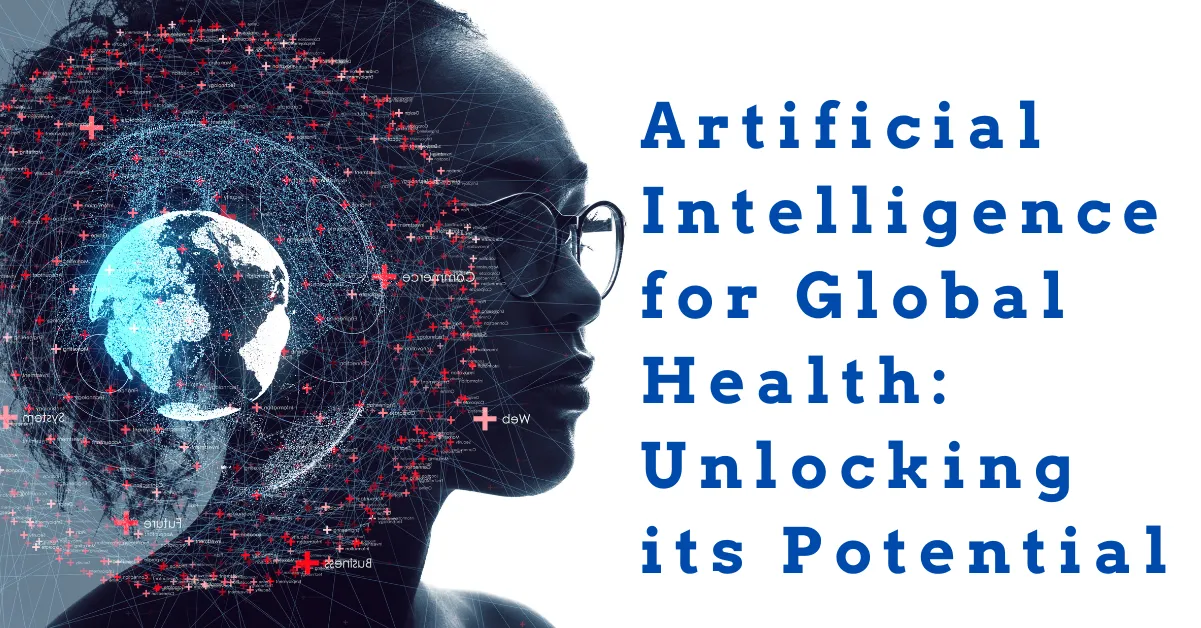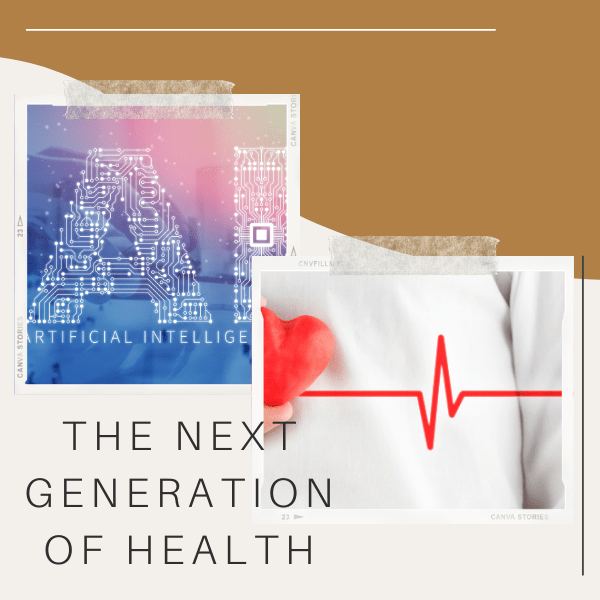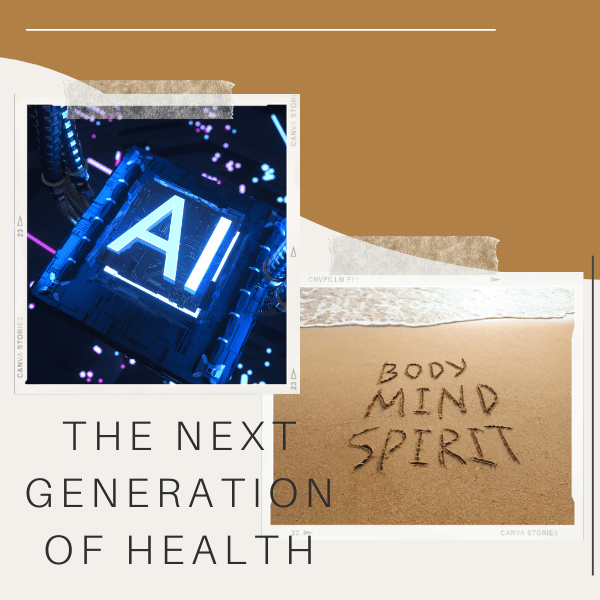Artificial Intelligence (AI) stands at the cusp of revolutionizing global health, offering unprecedented opportunities to address long-standing challenges and improve health outcomes for populations worldwide.
-
Unlocking Health Equity: How AI Can Bridge the Global Divide
- Enhancing Diagnostics and Disease Detection
- Advancing Personalized and Precision Medicine
- Empowering Healthcare Workers and Improving Efficiency
- Strengthening Public Health and Disease Prevention
- Addressing Challenges and Ensuring Equitable Access in Global Health
- What are the Challenges of using AI in Global Health?
- How is AI being utilized to combat diseases worldwide?
- What is the role of the WHO in AI for global health?
- Conclusion
- Sources & Credits:
Its ability to analyze vast datasets, identify patterns, and generate insights holds the key to transforming healthcare delivery, disease prevention, diagnostics, treatment, and public health management, particularly in resource-limited settings.
However, realizing this immense potential requires careful consideration of ethical implications, data equity, infrastructure limitations, and the need for robust governance frameworks.
Unlocking Health Equity: How AI Can Bridge the Global Divide
Enhancing Diagnostics and Disease Detection
One of the most promising applications of AI in global health lies in its ability to enhance diagnostics and facilitate earlier disease detection. AI algorithms can analyze medical images (such as X-rays, CT scans, and MRIs), laboratory results, and patient data with remarkable speed and accuracy, often surpassing human capabilities in identifying subtle anomalies indicative of disease.
- Medical Imaging Analysis: AI-powered tools can assist in the detection of various conditions, including tuberculosis, pneumonia, diabetic retinopathy, and different types of cancer, even in areas with a shortage of specialized healthcare professionals. For instance, AI algorithms have demonstrated the potential to identify breast cancer in mammograms with accuracy comparable to or even exceeding that of radiologists, enabling earlier intervention and potentially improved survival rates.
- Disease Surveillance and Outbreak Prediction: AI can analyze diverse datasets, including climate information, population movement patterns, social media activity, and historical disease data, to predict and monitor disease outbreaks. This enables timely public health interventions, such as targeted vaccination campaigns or resource allocation, to mitigate the spread of infectious diseases like dengue fever, influenza, and malaria.
- Point-of-Care Diagnostics: AI-integrated portable diagnostic devices can empower healthcare workers in remote areas to perform rapid and accurate tests for infectious diseases or chronic conditions, facilitating timely treatment initiation and reducing the burden on centralized healthcare facilities.
Advancing Personalized and Precision Medicine
AI’s capacity to process and interpret complex biological data, including genomics, proteomics, and metabolomics, is paving the way for personalized and precision medicine approaches in global health.
- Genomic Medicine: AI algorithms can analyze an individual’s genetic makeup to identify predispositions to certain diseases, predict drug response, and tailor treatment strategies for conditions like cancer, cardiovascular diseases, and rare genetic disorders, taking into account the genetic diversity of global populations. Initiatives like Israel’s Mosaic Project exemplify the potential of large-scale genomic data analysis for the advancement of personalized medicine.
- Drug Discovery and Development: AI is accelerating the identification of potential drug targets, optimizing drug design, and predicting the efficacy and safety of new therapies for diseases prevalent in low- and middle-income countries, such as HIV/AIDS, tuberculosis, and malaria. AI can also aid in repurposing existing drugs for new indications, reducing the time and cost associated with traditional drug development pipelines.
- Personalized Treatment Regimens: AI can integrate various patient data points, including medical history, lifestyle factors, and real-time physiological data from wearable sensors, to develop individualized treatment plans and predict patient responses to different interventions, thereby optimizing care for chronic conditions such as diabetes and hypertension.
Empowering Healthcare Workers and Improving Efficiency
AI-powered tools can augment the capabilities of healthcare workers, particularly in underserved areas facing critical shortages of medical professionals, and improve the efficiency of healthcare systems.
- Clinical Decision Support Systems: AI algorithms can provide healthcare workers with real-time access to evidence-based guidelines, diagnostic suggestions, and treatment recommendations, enhancing their clinical decision-making, reducing medical errors, and improving patient outcomes, especially in resource-constrained settings.
- AI-Powered Chatbots and Virtual Assistants: AI-driven chatbots can provide patients with basic health information, answer frequently asked questions, offer medication reminders, and facilitate remote consultations, expanding access to healthcare services and reducing the workload on healthcare professionals. Examples, such as Jacaranda Health’s PROMPTS system in Kenya, demonstrate the effectiveness of AI chatbots in maternal health.
- Streamlining Administrative Tasks: AI can automate routine administrative tasks, such as appointment scheduling, medical record management, billing, and insurance claims processing, freeing up healthcare professionals to focus on direct patient care and improving the overall efficiency of healthcare operations.
- Optimizing Resource Allocation: AI-powered predictive models can forecast patient admissions, predict demand for medical supplies, and optimize the allocation of healthcare resources, ensuring that personnel, equipment, and medications are available where and when they are needed most, reducing waste and improving the quality of care.
Strengthening Public Health and Disease Prevention
AI offers powerful tools for strengthening public health initiatives and implementing effective disease prevention strategies on a global scale.
- Predictive Analytics for Disease Prevention: AI can analyze population-level data to identify risk factors for various diseases, predict disease trends, and inform targeted public health interventions, such as vaccination campaigns, স্বাস্থ্য education programs, and lifestyle modification recommendations.
- Personalized Health Recommendations: AI algorithms can analyze individual health data and provide customized recommendations for behaviors and early detection screenings, empowering individuals to take proactive steps to maintain their health and prevent the onset of chronic diseases.
- Monitoring and Responding to Health Emergencies: AI can play a crucial role in monitoring and responding to public health emergencies, such as pandemics or natural disasters, by analyzing real-time data to track disease spread, identify vulnerable populations, and optimize the deployment of resources for practical response efforts.
Addressing Challenges and Ensuring Equitable Access in Global Health
While the potential of AI for global health is immense, several challenges must be addressed to ensure its equitable and responsible implementation:
- Data Availability and Quality: AI algorithms rely on large, high-quality, and representative datasets for training and validation. In many low- and middle-income countries, access to well-structured and comprehensive health data is limited, which can hinder the development and deployment of effective AI solutions tailored to local contexts. Efforts to improve data collection, standardization, and sharing are crucial.
- Algorithmic Bias and Fairness: AI algorithms can inadvertently perpetuate or amplify existing biases present in the data they are trained on, resulting in inaccurate or unfair outcomes for specific populations. Ensuring data diversity and developing bias-aware AI models are crucial for promoting health equity.
- Infrastructure and Connectivity: The successful implementation of AI in global health often requires adequate infrastructure, including reliable internet connectivity, access to technology, and skilled personnel to develop, deploy, and maintain AI systems. This can be a significant challenge in resource-limited settings.
- Integration and Interoperability: Integrating AI solutions seamlessly into existing healthcare systems and ensuring interoperability with different data formats and platforms are crucial for effective adoption and widespread impact.
- Capacity Building and Training: Building local capacity and training healthcare professionals in the use and interpretation of AI-powered tools are essential for the sustainable and effective implementation of AI in global health initiatives.
What are the Challenges of using AI in Global Health?
The integration of Artificial Intelligence (AI) into global health initiatives, while holding immense promise, faces a complex array of challenges that can hinder its effective and equitable implementation. One significant hurdle is the lack of structured and representative data, particularly in low- and middle-income countries. AI algorithms thrive on large, high-quality datasets. Still, the scarcity of well-documented health records and the underrepresentation of diverse populations in existing datasets can lead to biased algorithms that perform poorly or even harmfully in specific contexts.
Inadequate infrastructure and limited connectivity pose another substantial barrier. AI-powered tools often require reliable internet access, sufficient computational power, and access to technology, which are not consistently available in many regions where global health challenges are most pressing. This digital divide can exacerbate existing health inequalities.
Ethical considerations and the absence of robust regulatory frameworks also present significant challenges. Issues surrounding data privacy, security, transparency, and accountability require careful consideration to ensure the responsible deployment of AI. Without clear guidelines and ethical principles, the use of AI in global health could lead to unintended consequences and erode public trust in the field.
Furthermore, algorithmic bias and fairness are critical concerns. If AI models are trained on biased data, they can perpetuate and amplify existing health disparities, leading to inequitable outcomes for marginalized populations. Addressing these biases requires careful attention to data collection, model development, and ongoing monitoring.
Finally, integrating AI solutions into existing healthcare systems and ensuring interoperability with diverse technologies and workflows can be complex and resource-intensive, requiring significant investment and collaboration. Building local capacity and training healthcare workers to use and interpret AI tools effectively is also essential for sustainable adoption.
How is AI being utilized to combat diseases worldwide?
Artificial Intelligence is emerging as a powerful tool in the global fight against a wide range of diseases, offering innovative solutions across various stages of prevention, diagnosis, treatment, and surveillance. In diagnostics, AI algorithms can analyze medical images, such as X-rays and CT scans, to detect diseases like tuberculosis and cancer with increased speed and accuracy, particularly in areas with limited access to specialists.
AI is also being used in point-of-care diagnostics, enabling rapid and accurate testing for infectious diseases in remote settings.
For disease surveillance and outbreak prediction, AI can analyze diverse data sources, including climate patterns, population movement, and social media, to forecast and monitor outbreaks of diseases such as malaria and dengue fever, enabling timely public health interventions.
In the realm of personalized medicine, AI analyzes genomic data to understand disease predispositions and tailor treatments for conditions such as cancer and cardiovascular diseases, taking into account the genetic diversity of global populations. AI is also accelerating drug discovery and development for diseases prevalent in low- and middle-income countries, such as HIV/AIDS and tuberculosis, by identifying potential drug targets and predicting efficacy.
Furthermore, AI-powered chatbots and virtual assistants are providing basic health information, medication reminders, and remote consultations, expanding access to healthcare services. In public health, AI aids in predicting disease trends, identifying risk factors, and personalizing prevention strategies, contributing to a more proactive approach to global health security.
What is the role of the WHO in AI for global health?
The World Health Organization (WHO) plays a crucial and multifaceted role in shaping the responsible and ethical integration of Artificial Intelligence into global health. Recognizing AI’s immense potential and inherent risks, WHO actively works to guide member states, develop ethical standards, and foster international collaboration in this rapidly evolving field.
WHO’s role encompasses setting norms and standards through the development of ethical and governance frameworks for AI in health. Their guidance documents address critical issues, including data privacy, algorithmic bias, transparency, and accountability, to ensure that AI technologies are developed and deployed in a manner that benefits all populations equitably.
The organization also serves as a convener and facilitator, bringing together experts, policymakers, researchers, and industry stakeholders through initiatives like the Global Initiative on Artificial Intelligence for Health (GI-AI4H), a collaboration with the International Telecommunication Union (ITU) and the World Intellectual Property Organization (WIPO). This initiative aims to establish robust governance structures, policies, and technical guidance for the evidence-based adoption of AI in healthcare.
Furthermore, WHO is involved in knowledge sharing and capacity building, working to increase awareness and understanding of AI in health among healthcare professionals and policymakers globally. They also support research and the development of sustainable models for AI implementation at the country level, particularly in resource-limited settings. WHO also actively monitors the applications of AI in disease surveillance and outbreak response, leveraging its potential to strengthen global health security. By prioritizing safety, equity, and ethical considerations, WHO strives to harness AI as a powerful force for innovation and progress towards achieving better health for everyone, everywhere.
Conclusion
Artificial intelligence (AI) holds transformative potential to address critical global health challenges, improve health outcomes, and promote health equity worldwide. Its applications span a wide range of areas, from enhancing diagnostics and advancing personalized medicine to empowering healthcare workers and strengthening public health systems.
However, realizing this potential requires a concerted global effort to address the associated challenges, including data limitations, algorithmic bias, infrastructure gaps, ethical considerations, and the need for robust governance frameworks. By prioritizing equitable access, fostering international collaboration, and investing in capacity building, the world can harness the power of AI to create a healthier and fairer future for all.
Sources & Credits:
https://makueni.go.ke/sandbox/site/files/2024/07/JACARANDA-HEALTH.pdf
https://www.accessdata.fda.gov/
https://www.cybiant.com/resources/the-challenges-of-ai-implementation/
Share this:
- Click to share on Facebook (Opens in new window) Facebook
- Click to share on Pinterest (Opens in new window) Pinterest
- Click to share on LinkedIn (Opens in new window) LinkedIn
- Click to share on X (Opens in new window) X
- Click to share on Tumblr (Opens in new window) Tumblr
- Click to share on Bluesky (Opens in new window) Bluesky






It is clear that AI is Revolutionizing Healthcare: Transforming Lives for the Better
Artificial Intelligence is revolutionizing the way we approach healthcare. AI is transforming the industry
I’m particularly interested in how AI algorithms can predict user behavior to optimize website content
AI can optimize the distribution of healthcare resources and personnel by predicting trends in healthcare usage. This can lead to more efficient responses during health crises, such as pandemics, by forecasting patient needs and staff requirements.
Content creators specializing in healthcare are uniquely positioned to bridge the gap between complex medical information and patient understanding. By leveraging AI for syndication, we could democratize access to vital health knowledge
I was reading an article the other day about AI helping to personalize treatments based on someone’s specific genetic makeup, even in places with limited resources. That just feels so revolutionary! It’s not just about treating the masses, but actually tailoring healthcare to the individual, no matter where they live.